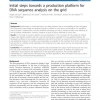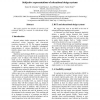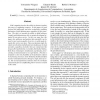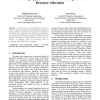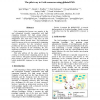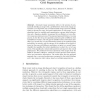130
Voted
BMCBI
2010
14 years 10 months ago
2010
Background: Bioinformatics is confronted with a new data explosion due to the availability of high throughput DNA sequencers. Data storage and analysis becomes a problem on local ...
114
Voted
IEEECIT
2009
IEEE
14 years 10 months ago
2009
IEEE
Abstract--The size, heterogeneity and dynamism of the execution platforms of scientific applications, like computational grids, make using those platforms complex. Furthermore, tod...
89
Voted
ICALT
2009
IEEE
14 years 10 months ago
2009
IEEE
This paper explores the benefits of repertory grid technique (RGT) for research on educational design systems.
126
click to vote
GPC
2009
Springer
14 years 10 months ago
2009
Springer
Grid computing involves the ability to harness together the power of computing resources. In this paper we push forward this philosophy and show technologies enabling federation o...
140
Voted
GCA
2009
14 years 10 months ago
2009
In this article a new algorithm for grid resource allocation based upon the theory of Algorithmic Mechanism Design (AMD) is presented. This algorithm is targeted at minimizing cost...
105
Voted
ERCIMDL
2009
Springer
14 years 10 months ago
2009
Springer
This paper presents a hybrid scavenger grid as an underlying hardware architecture for search services within digital libraries. The hybrid scavenger grid consists of both dedicate...
137
Voted
CSIE
2009
IEEE
14 years 10 months ago
2009
IEEE
Grid computing has become very popular in big and widespread scientific communities with high computing demands, like high energy physics. Computing resources are being distribute...
161
click to vote
MICAI
2010
Springer
14 years 10 months ago
2010
Springer
Abstract. Automatic image annotation refers to the process of automatically labeling an image with a predefined set of keywords. Image annotation is an important step of content-ba...
129
Voted
IEEEHPCS
2010
14 years 10 months ago
2010
In grid computing systems, providing fault-tolerance is required for both scientific computation and file-sharing to increase their reliability. In previous works, several mechani...
151
Voted
ICPADS
2010
IEEE
14 years 10 months ago
2010
IEEE
In this paper, we propose a taxonomy that characterizes and classifies different components of autonomic application management in Grids. We also survey several representative Gri...
